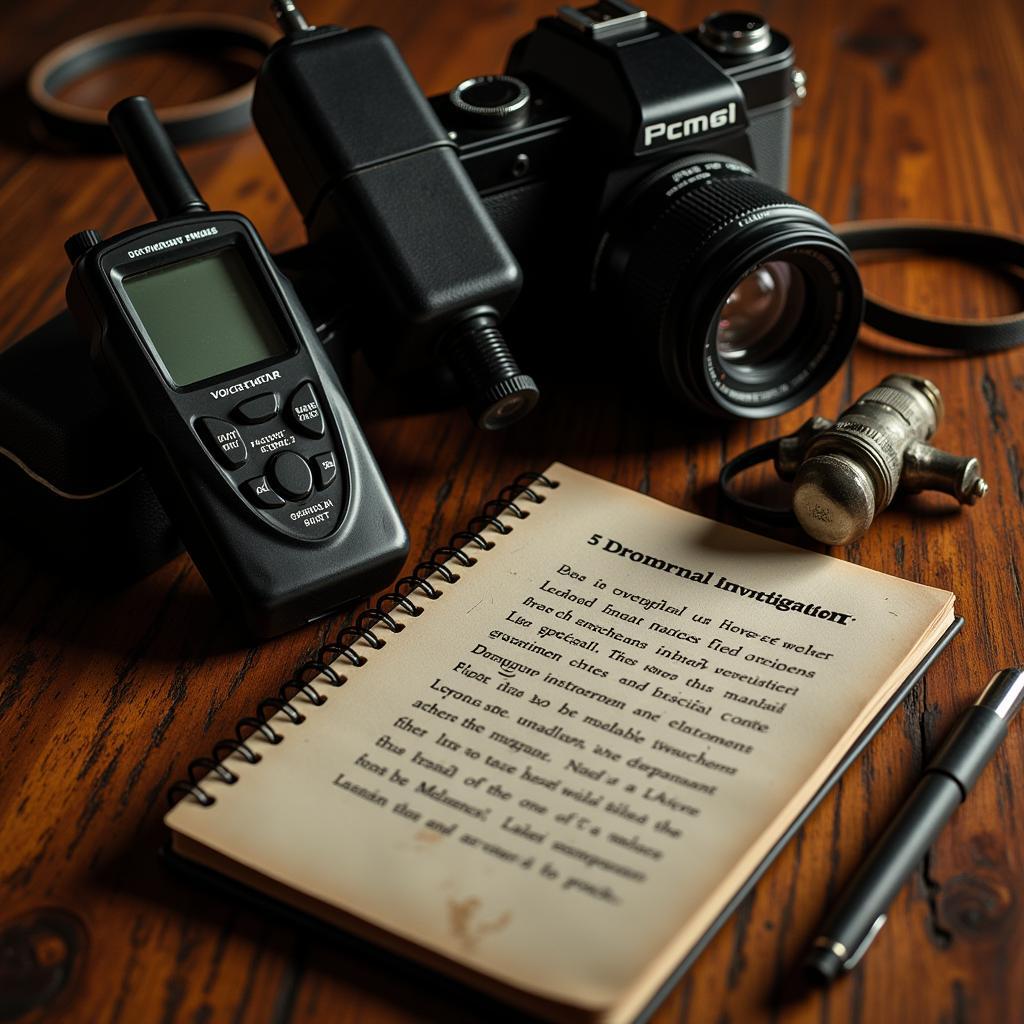A well-structured research report is paramount in the world of paranormal investigation. It provides a framework for analyzing evidence, documenting experiences, and presenting findings in a clear, concise, and compelling manner. This guide, built around a comprehensive Research Report Rubric, will equip you with the tools to craft impactful reports that illuminate the mysteries of the unexplained.
What Makes a Strong Paranormal Research Report?
 Essential Tools for Paranormal Investigation
Essential Tools for Paranormal Investigation
A compelling paranormal research report transcends mere storytelling; it delves into the heart of an investigation with meticulous detail and analytical rigor. It’s not enough to simply describe events; one must present evidence, interpret data, and explore various explanations with an objective and discerning eye.
Essential Components of a Research Report Rubric
A robust rubric serves as a roadmap for crafting a powerful research report. Here are the key elements to consider:
1. Introduction and Background
- Clearly state the research question: What specific phenomenon or event are you investigating?
- Provide context: Offer background information about the location, history, or entities involved.
- Outline your research methods: How did you collect data? Did you use interviews, EVP recordings, or electromagnetic field readings?
2. Evidence and Documentation
- Present your findings: Detail your observations, experiences, and data collected.
- Use multimedia: Incorporate photos, audio recordings, and video footage to support your claims.
- Maintain objectivity: Present the evidence without bias, allowing readers to form their own conclusions.
3. Analysis and Interpretation
- Analyze the data: What patterns or anomalies emerge from your evidence?
- Explore possible explanations: Consider both paranormal and conventional explanations for the observed phenomena.
- Evaluate the credibility of evidence: Are there any inconsistencies or alternative interpretations?
4. Conclusion and Recommendations
- Summarize your findings: Concisely state the key takeaways from your investigation.
- Address limitations: Acknowledge any constraints or limitations in your research.
- Suggest further research: Propose potential avenues for future investigation based on your findings.
Tips for an Effective Paranormal Research Report
- Write clearly and concisely: Use precise language and avoid jargon.
- Maintain a neutral tone: Avoid sensationalizing or exaggerating your findings.
- Cite your sources: Attribute any external information or research used in your report.
- Seek peer review: Have fellow researchers review your report for clarity, accuracy, and objectivity.
The Power of a Well-Crafted Research Report
A meticulously crafted research report is the cornerstone of credible paranormal investigation. It serves not only as a record of your findings but also as a testament to your commitment to unraveling the mysteries that lie beyond the veil of our understanding. By adhering to the principles outlined in this rubric, you can elevate your investigations and contribute to the ever-evolving field of Paranormal Research.
Remember, the quest for understanding the unknown requires a blend of curiosity, skepticism, and a dedication to rigorous research.